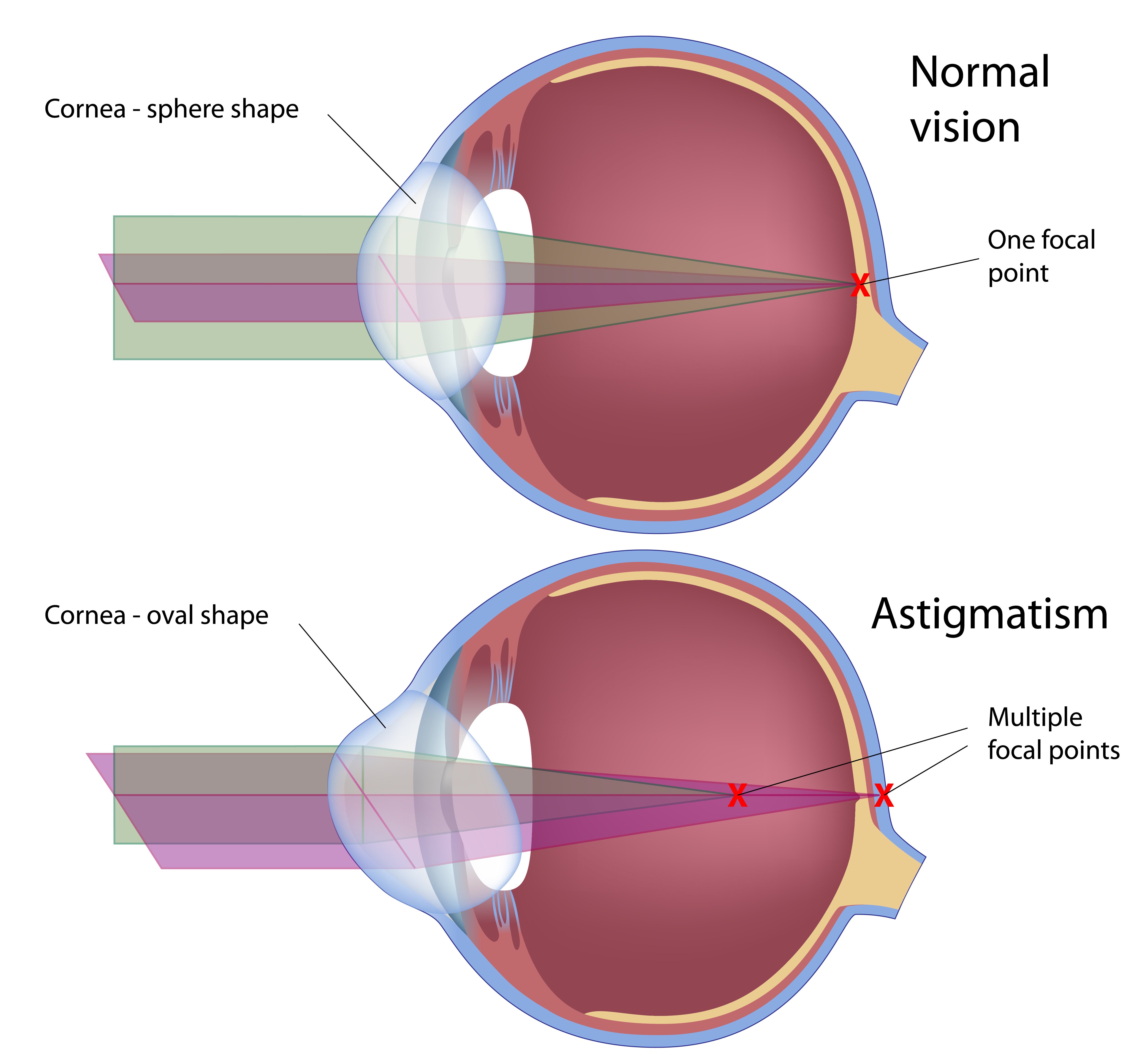Updated on November 7, 2024
What to Know About Astigmatism After LASIK


Vision Center is funded by our readers. We may earn commissions if you purchase something via one of our links.
Can You Develop Astigmatism After LASIK?
Although more than 90 percent of LASIK beneficiaries achieve 20/20 vision without complications, residual astigmatism can develop after the procedure. Residual astigmatism is a type of astigmatism that persists after laser surgery.
It may occur due to inaccurate preoperative measurements, incorrect corneal markings, posterior corneal curvature, or other surgical mistakes. To minimize the risk of complications, visit a qualified and experienced ophthalmologist.

How Long Does Astigmatism Last After LASIK?
Most people who get LASIK realize a difference in their astigmatism immediately after surgery. Schedule a follow-up appointment 24 to 48 hours after LASIK.
This way, your doctor can monitor the healing process closely. They can also detect and correct any issues before they worsen.
If you develop astigmatism after surgery, you may benefit from LASIK enhancement. However, you may have to wait until you fully recover from your first surgery (usually 3 to 6 months).
How to Treat Astigmatism After LASIK
Treatment for astigmatism may vary depending on various factors. However, the main goal is to improve vision and ease discomfort.
Notable treatment options include:
- Eyeglasses. Helps focus light on the retina, improving visual acuity. Some lenses are specifically designed to correct astigmatism and other forms of refractive errors.
- Contact lenses. Some examples of contacts for astigmatism include disposable lenses, rigid contact lenses, and toric lenses.
- Orthokeratology (ortho-k). Involves wearing a rigid gas-permeable contact lens designed to reshape the cornea over time.
- Lens replacement. A permanent solution to astigmatism that involves removing your natural eye lens and replacing it with an artificial one.
- Refractive surgery. Laser surgery such as photorefractive keratectomy (PRK) and LASIK can treat severe astigmatism.
- Phakic intraocular lenses (IOLs). Involves placing an artificial lens in front of your eye’s natural lens to improve focus.
Can LASIK Correct Astigmatism?
LASIK surgery involves reshaping the cornea. It does so by using laser technology to correct refractive errors, including astigmatism. The effect of LASIK is permanent.6
Typically, a normal cornea has zero diopters of astigmatism.7 People with more than 1.5 diopters are likely to use glasses and/or contact lenses.
LASIK surgery offers a permanent solution and eliminates the need for glasses and/or contacts. Severe astigmatism often affects the cost of LASIK due to the likelihood of LASIK enhancement.
How Much Does LASIK for Astigmatism Cost?
LASIK for astigmatism is considered an elective procedure. Therefore, insurance does not cover it.
In the United States, the average cost of LASIK is around $2,500 per eye. This includes the consultation and follow-up care fees.
However, this price may change depending on the type of astigmatism, the clinic’s location, the technology used, and the surgeon’s expertise. Before making a decision, speak to your ophthalmologist about pricing. Some surgeons offer payment plans.
In this article
9 sources cited
Updated on November 7, 2024
Updated on November 7, 2024
About Our Contributors
Vincent Ayaga is a medical researcher and seasoned content writer with a bachelor's degree in Medical Microbiology. Specializing in disease investigation, prevention, and control, Vincent is dedicated to raising awareness about visual problems and the latest evidence-based solutions in ophthalmology. He strongly believes in the transformative power of ophthalmic education through research to inform and educate those seeking knowledge in eye health.
Dr. Melody Huang is an optometrist and freelance health writer with a passion for educating people about eye health. With her unique blend of clinical expertise and writing skills, Dr. Huang seeks to guide individuals towards healthier and happier lives. Her interests extend to Eastern medicine and integrative healthcare approaches. Outside of work, she enjoys exploring new skincare products, experimenting with food recipes, and spending time with her adopted cats.

